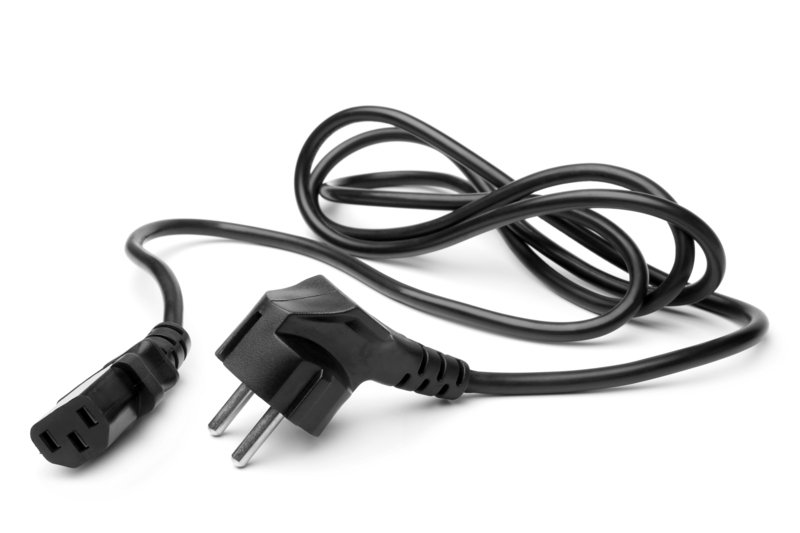Maximize Sofa Preservation with Pro Storage Methods
Posted on 17/05/2025
Maximize Sofa Preservation with Pro Storage Methods
Sofas are more than just furniture--they're investments in comfort, style, and the functionality of your living space. Whether you're moving, remodeling, or simply safeguarding a prized piece during a transition, sofa preservation is essential. The right storage methods can prolong your couch's lifespan, maintain its beauty, and protect your investment. In this comprehensive guide, we'll show you how to maximize sofa preservation with professional storage strategies, ensuring your furniture remains in pristine condition for years to come.

Why Proper Sofa Storage Matters
Before exploring pro storage methods for sofas, it's crucial to understand the risks your furniture faces while in storage. Without the right precautions, sofas can suffer from:
- Mold and mildew due to trapped moisture
- Pest infestations, including insects or rodents
- Structural damage from sagging, warping, or pressure points
- Discoloration and fading from sunlight or chemical residues
- Odors that become difficult to remove over time
Properly storing your sofa mitigates these issues, protecting both its appearance and integrity. Let's dive into the best storage solutions for sofas.
Step-by-Step Guide: Maximizing Sofa Preservation with Pro Methods
1. Thorough Cleaning Before Storage
Cleaning is a fundamental first step. Storing a dirty sofa can set stains, attract pests, or cause odor build-up.
- Fabric sofas: Vacuum thoroughly using an upholstery attachment to remove dirt, crumbs, and pet hair. Spot-clean stains with a recommended fabric cleaner and allow the sofa to dry completely before moving to the next steps.
- Leather sofas: Wipe down with a damp cloth and apply a dedicated leather conditioner. This not only removes dirt but also helps the material stay supple during long-term storage.
- Wood or metal accents: Dust and clean these areas, then dry them thoroughly. For wood, apply a quality polish to prevent drying or cracking.
2. Disassemble When Possible
Disassembling your sofa can make storage easier and safer. Remove legs, cushions, and any detachable parts. Store screws and hardware in a labeled plastic bag taped to the frame. This step reduces the chances of breakage and maximizes space efficiency in storage.
3. Selecting the Right Storage Space
Not all storage environments are equal. Maintaining optimal conditions is pivotal for long-term sofa storage.
- Climate-controlled storage units are ideal, especially for leather and fabric sofas. These protect against extreme temperatures and humidity, key factors in mold growth and material degradation.
- Dampness and leaks: Avoid basements or garages unless they are well-sealed and ventilated. Moisture is the number one enemy of stored furniture.
- Cleanliness and security: Visit and ensure the facility is clean, free of pests, and offers adequate security features.
4. Proper Wrapping and Protection
Covering your sofa correctly is essential for preservation. Avoid plastic wrap directly on upholstery, which can trap moisture.
- Use breathable covers such as moving blankets or cotton dust sheets. These allow air circulation, keeping mildew at bay.
- If using plastic, place it loosely over the sofa and always with a fabric barrier underneath.
- For leather, opt for specialty leather covers or soft, dry blankets.
- Wrap legs and small components separately to prevent scratching or scuffing.
5. Elevate and Position with Care
Never place your sofa directly on concrete or the floor. Moisture can seep up, causing everything from warping to mold.
- Lay down wooden pallets, moving pads, or blocks to elevate the sofa.
- Store it upright to save space, but ensure it's properly balanced to prevent tipping or bending the frame.
- Avoid placing heavy items on top of the sofa, as this can cause permanent indentations or warping.
6. Maintain Airflow and Accessibility
A cramped storage area increases the risk of damage.
- Leave several inches of space between your sofa and the walls to allow air to circulate.
- Arrange other furniture or boxes so they do not press against the sofa, reducing pressure points and abrasions.
- If possible, periodically check on your sofa to ensure that covers remain intact and conditions are optimal.
7. Avoid Common Storage Mistakes
- Don't wrap your sofa in plastic alone - it's a magnet for mold.
- Never store a wet or damp sofa, as this guarantees odor and mildew.
- Don't forget about pests--use repellents if the facility seems vulnerable.
- Never force-fit a sofa into a tight storage area, as this can twist or break the frame.
Professional Techniques for Superior Sofa Preservation
Using Specialty Products
Modern storage has evolved, and sofa preservation now benefits from specialty products designed to protect furniture in storage:
- Desiccant packs: These absorb excess moisture, reducing the risk of mold.
- Pest deterrents: Herbal sachets or rodent repellent pouches keep unwanted critters away.
- Upholstery-protecting sprays: These create a barrier against spills or humidity for fabric sofas.
- Leather balms: Condition and shield leather sofas from cracking or fading during storage.
Leveraging Professional Moving Services
Fully utilizing a professional moving company can mean the difference between a well-preserved sofa and a damaged one.
- Pros use special handling techniques to minimize bumps and scrapes during the move.
- They provide high-quality wrapping materials, ensuring your sofa is protected from dust, moisture, and pests.
- Experts can also advise on disassembly and reassembly for complex sofas with recliners, modular components, and more.
Post-Storage Care: Bringing Your Sofa Back Home
Once the storage period is over, follow these guidelines to ensure your sofa is resettled safely:
- Unwrap carefully outdoors if possible, shaking out covers and checking for pests.
- Inspect every surface for moisture, mold, or insect signs.
- Allow the sofa to breathe in a ventilated space before use.
- Give it a gentle clean and, if needed, a fresh treatment of fabric or leather conditioner.
- Reassemble carefully, using hardware stored at the outset.
Choosing the Best Storage Type for Sofa Longevity
Short-Term vs. Long-Term Sofa Storage
The duration of storage plays a key role in the preservation method you choose:
- Short-term storage (weeks to a few months): May allow minimal prepping, but always protect from dust and sudden temperature changes.
- Long-term storage (several months or more): Demands more robust preparations--climate control, specialty covers, periodic checks, and pest prevention become essential.
Self-Storage Unit or Full-Service Storage?
Self-storage units are cost-effective and convenient, but require you to handle all preparations. Full-service storage options provide pick-up, preparation, and even regular maintenance for high-value items.
- If you have antique or luxury sofas, a full-service solution often yields superior preservation results.
- For standard sofas, self-storage is viable--just ensure you follow the pro methods discussed here.
Frequently Asked Questions About Sofa Storage
Can I store my sofa without climate control?
While it's possible, it's not recommended for extended periods, especially for leather or upholstered sofas. Temperature fluctuations and humidity cause most of the common damages seen in stored furniture.
How do I protect my sofa from pests in storage?
Start with a thorough cleaning, storing in a pest-free environment, and using natural repellents. Some storage facilities also offer pest control services.
Is it safe to stack items on my sofa in storage?
No--stacking items can permanently warp cushions or frames. Always store your sofa alone or only atop soft, light objects that won't cause pressure.
How often should I check on my stored sofa?
For long-term storage, monthly or bi-monthly check-ins are ideal. This allows you to spot and remedy potential issues before they escalate.

Top Tips to Maximize Sofa Preservation
- Always clean and dry before storing.
- Use breathable covers, never airtight plastic alone.
- Elevate to protect from ground moisture.
- Opt for climate control in humid or extreme weather regions.
- Label all parts and keep screws/hardware safe.
- Schedule periodic checks during long-term storage.
Conclusion: Prolonging Life with Pro Storage Methods
Maximizing sofa preservation with professional storage techniques isn't just for moves or renovations--it's an investment in the longevity and value of your furniture. Whether you're a homeowner, a renter, or a furniture collector, these methods ensure your favorite sofa stays beautiful, comfortable, and structurally sound for years to come. Remember: the effort you put into careful storage pays off when your sofa returns looking as good as new.
Following these expert storage strategies for sofas will empower you to protect your cherished furniture through any circumstance. Don't compromise on quality--apply these tips and enjoy lasting comfort and style!



